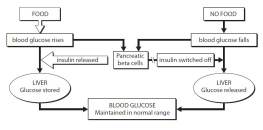- Introduction:
A Not-So-Sweet Disease - Chapter One:
Defining Diabetes - Chapter Two:
Diabetes Diagnosis - Chapter Three:
Diabetes Treatment and Management - Chapter Four:
Coming to Terms with Diabetes - Chapter Five:
Diabetes in the Future
Published in 2018 by
Lucent Press, an Imprint of Greenhaven Publishing, LLC
353 3rd Avenue Suite 255
New York, NY 10010
Copyright 2018 Greenhaven Press, a part of Gale, Cengage Learning
Gale and Greenhaven Press are registered trademarks used herein under license.
All new materials copyright 2018 Lucent Press, an Imprint of Greenhaven Publishing, LLC.
All rights reserved. No part of this book may be reproduced in any form without permission in writing from the publisher, except by a reviewer.
Designer: Deanna Paternostro Editor: Jennifer Lombardo
Library of Congress Cataloging-in-Publication Data
Names: Mahoney, Emily Jankowski, author.
Title: Diabetes : diagnosis and management / Emily Mahoney.
Description: New York : Lucent Press, 2018. | Series: Diseases and disorders | Includes bibliographical references and index.
Identifiers: LCCN 2017033873 | ISBN 9781534562851 (pbk.) | ISBN 9781534562325 (library bound book)
Subjects: LCSH: Diabetes--Treatment. | Diabetes--Diagnosis.
Classification: LCC RC660 .M235 2018 | DDC 616.4/62-dc23 LC record available at https://lccn.loc.gov/2017033873
Printed in the United States of America
CPSIA compliance information: Batch #CW18KL: For further information contact Greenhaven Publishing LLC, New York, New York at 1-844-317-7404.
Please visit our website, www.greenhavenpublishing.com . For a free color catalog of all our high-quality books, call toll free 1-844-317-7404 or fax 1-844-317-7405.
Introduction:
A Not-So-Sweet Disease
Chapter One:
Defining Diabetes
Chapter Two:
Diabetes Diagnosis
Chapter Three:
Diabetes Treatment and Management
Chapter Four:
Coming to Terms with Diabetes
Chapter Five:
Diabetes in the Future
I llness is an unfortunate part of life, and it is one that is often misunderstood. Thanks to advances in science and technology, people have been aware for many years that diseases such as the flu, pneumonia, and chicken pox are caused by viruses and bacteria. These diseases all cause physical symptoms that people can see and understand, and many people have dealt with these diseases themselves. However, sometimes diseases that were previously unknown in most of the world turn into epidemics and spread across the globe. Without an awareness of the method by which these diseases are spreadthrough the air, through human waste or fluids, through sexual contact, or by some other methodpeople cannot take the proper precautions to prevent further contamination. Panic often accompanies epidemics as a result of this lack of knowledge.
Knowledge is power in the case of mental disorders, as well. Mental disorders are just as common as physical disorders, but due to a lack of awareness among the general public, they are often stigmatized. Scientists have studied them for years and have found that they are generally caused by hormonal imbalances in the brain, but they have not yet determined with certainty what causes those imbalances or how to fix them. Because even mild mental illness is stigmatized in Western society, many people prefer not to talk about it.
Chronic pain disorders are also not well under-stoodeven by researchersand do not yet have foolproof treatments. People who have a mental disorder or a disease opinions. People who do not have these disorders sometimes struggle to understand how difficult it can be to deal with the symptoms. These disorders are often termed invisible illnesses because no one can see the symptoms; this leads many people to doubt that they exist or are serious problems. Additionally, people who have an undiagnosed disorder may understand that they are experiencing the world in a different way than their peers, but they have no one to turn to for answers.
Misinformation about all kinds of ailments is often spread through personal anecdotes, social media, and even news sources. This series aims to present accurate information about both physical and mental conditions so young adults will have a better understanding of them. Each volume discusses the symptoms of a particular disease or disorder, ways it is currently being treated, and the research that is being done to understand it further. Advice for people who may be suffering from a disorder is included, as well as information for their loved ones about how best to support them.
With fully cited quotes, a list of recommended books and websites for further research, and informational charts, this series provides young adults with a factual introduction to common illnesses. By learning more about these ailments, they will be better able to prevent the spread of contagious diseases, show compassion to people who are dealing with invisible illnesses, and take charge of their own health.
INTRODUCTION
A mazing technology allows doctors to treat, manage, and cure more diseases than ever before. From genetic testing to scans such as X-rays, technology allows doctors and technicians to look inside the human body in ways that were not possible even a few years ago. For many centuries, however, doctors had to depend on their knowledge of the human body and limited technology to make diagnoses. This was difficult because doctors did not know nearly as much as they do today, and their diagnoses were frequently inaccurate.
Despite their limited knowledge, even thousands of years ago, doctors noticed that some of their patients were always hungry, and even though they ate large amounts of food, they did not gain any weight. These patients often felt sleepy and weak, and some even fell unconscious. Even stranger, though, was that they suffered from a horrible thirst that no amount of liquid seemed to satisfy, and they had to urinate often, sometimes passing more than 10 quarts (9.6 liters) a dayan amount that would fill nearly five large soda bottles.
Doctors also noticed that these patients urine smelled extremely sweet. Doctors in ancient India called it honey urine and saw the attraction of flies and ants to the urine of those affected by this ailment. In 17th-century Europe, doctors tasted the urine of these patients and found it to be sugary. Because of these things, this mystery illness came to be known as sugar disease. Sadly, people who suffered from this disease died quickly because there was no known treatment or cure for their strange and unexplained symptoms.
Today, due to advanced medical knowledge, there is a name for sugar disease: diabetes mellitus, more commonly known as diabetes. Although diabetes is a serious and potentially deadly disease, people who are diabetic can live long, productive lives if they take care of themselves. Thomas Edison, the creator of the light bulb and many other inventions, had diabetes and lived to age 84. Laura Ingalls Wilder, who wrote the Little House on the Prairie books, lived until age 90 despite having diabetes. Many famous people today live well with this disease. Among them are filmmaker George Lucas, actress Halle Berry, and singer Nick Jonas. Even top athletes have diabetes, including NFL quarterback Jay Cutler, baseball player Adam Duvall of the Cincinnati Reds, and Max Domi of the NHLs Arizona Coyotes.
Next page

















